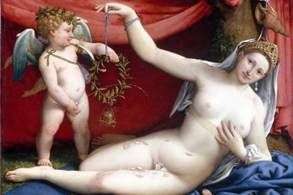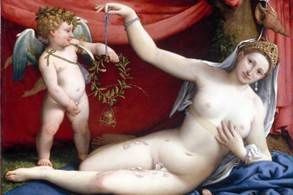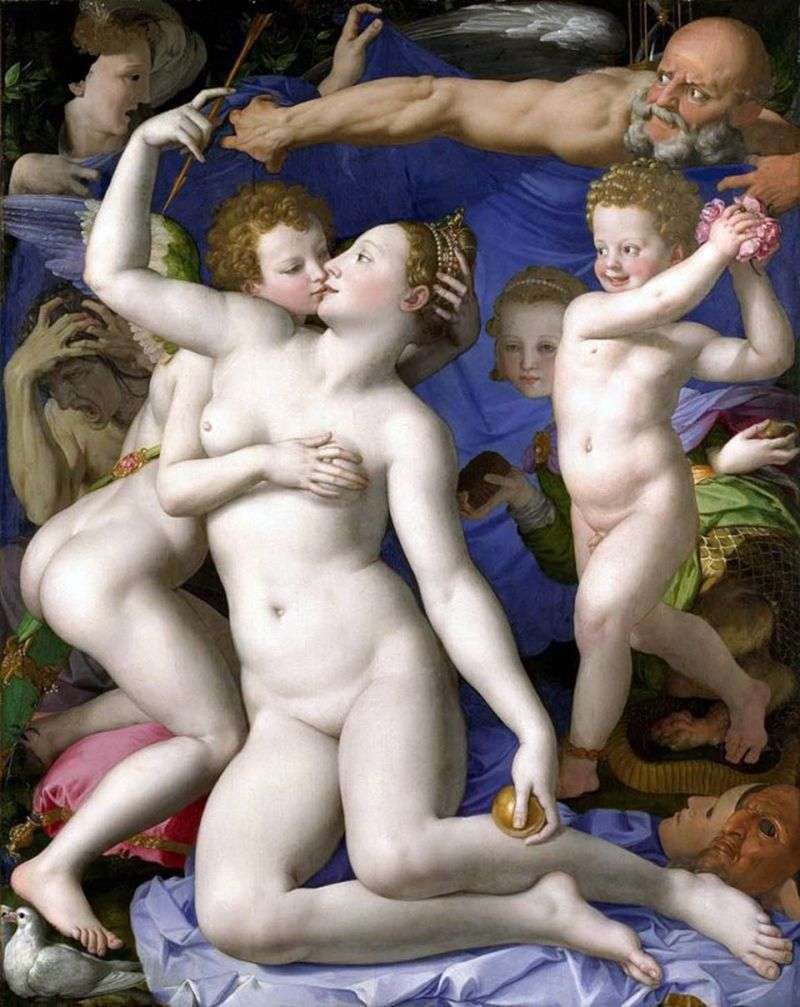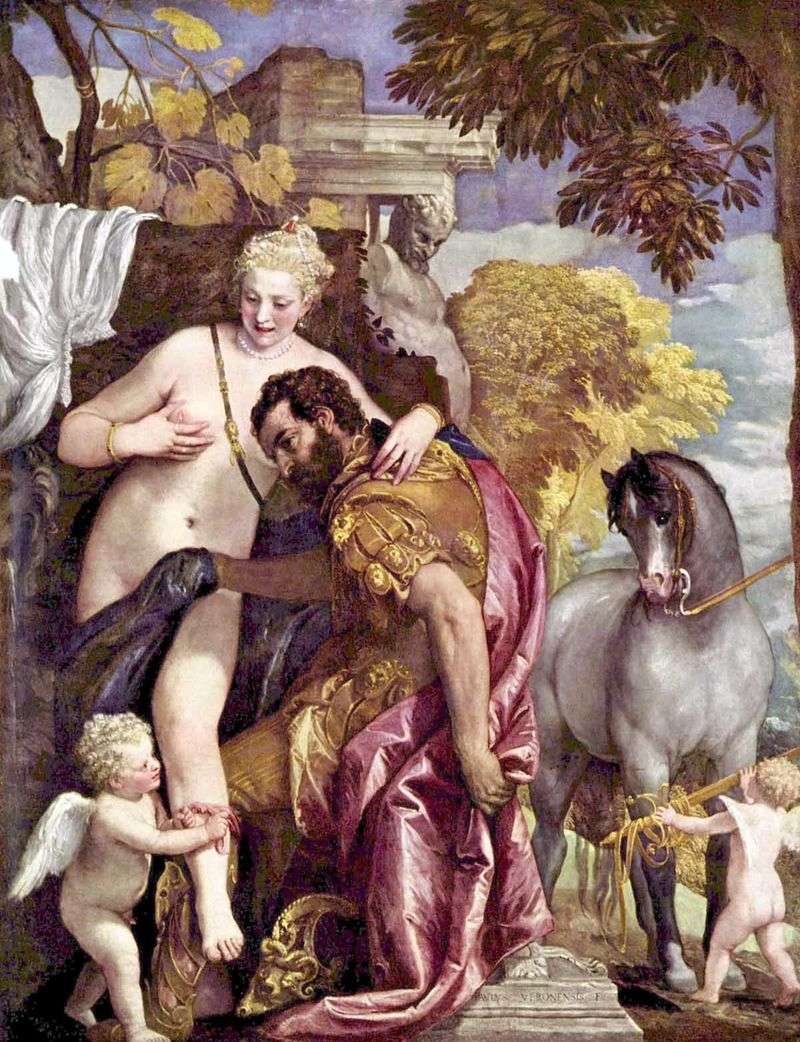
Lotto is one of the most interesting, versatile and original artists of the Italian Cinquecento. Unknown circumstances of the order of this work. Perhaps the picture was written at the request of the nephew of the artist Mario d’Armano.
The seemingly typical scene for Lotto seems to be rather complicated from an iconographic point of view, providing opportunities for a variety of interpretations. The simplest is the one that interprets the work as an allegory of happiness: the iconographic structure of the work, supposedly written on the occasion of the wedding, directly corresponds to the classical epitalam. The composition is dominated by the figure of Venus, whose head is crowned with a magnificent tiara with a wedding veil. The shell, the petals of the roses, which seemed to have just descended upon its bosom, and the myrtle are the classic symbols that identify the goddess.
Other details of the composition are associated with love and loyalty: the myrtle garland and censer, the red cover, ivy. Cupid pees through a myrtle wreath, which means the wishes of fertility and a happy fate to the union. The foreground shows the Serpent, almost invisible among the folds of drapery on which Venus is reclining.
Some tend to associate it with jealousy. But according to ancient beliefs, this reptile was a phallic symbol associated with the Mother Earth, and here is an allegory of happiness and fertility. In the background, behind the head of Venus, the sprouts of ivy that entwined a tree attract attention. The main characteristics of climbing plants is that they are evergreen and grow, “hugging” the trunks of trees.
Ivy was associated with manifestations of love and friendship, becoming a symbol of loyalty and eternal love. The artist managed to wonderfully display the audacious expression and slyness of Cupid. On the head of the faithful companion of Venus – a wreath of myrtle, revered in ancient times as a symbol of fertility. This interpretation is supported here by the gesture of the divine boy, which marks a happy and fruitful union.
 Venus y Cupido – Lorenzo Lotto
Venus y Cupido – Lorenzo Lotto Venus and Cupid by Alessandro Allori
Venus and Cupid by Alessandro Allori Vénus et Cupidon – Lorenzo Lotto
Vénus et Cupidon – Lorenzo Lotto Learning Cupid by Francois Boucher
Learning Cupid by Francois Boucher Allegory with Venus and Cupid by Agnolo Bronzino
Allegory with Venus and Cupid by Agnolo Bronzino Venus and Mars connected by Cupid by Paolo Veronese
Venus and Mars connected by Cupid by Paolo Veronese Venus and Cupid by Hans Baldung
Venus and Cupid by Hans Baldung Venus and Cupid, followed by a spy satire by Correggio (Antonio Allegri)
Venus and Cupid, followed by a spy satire by Correggio (Antonio Allegri)